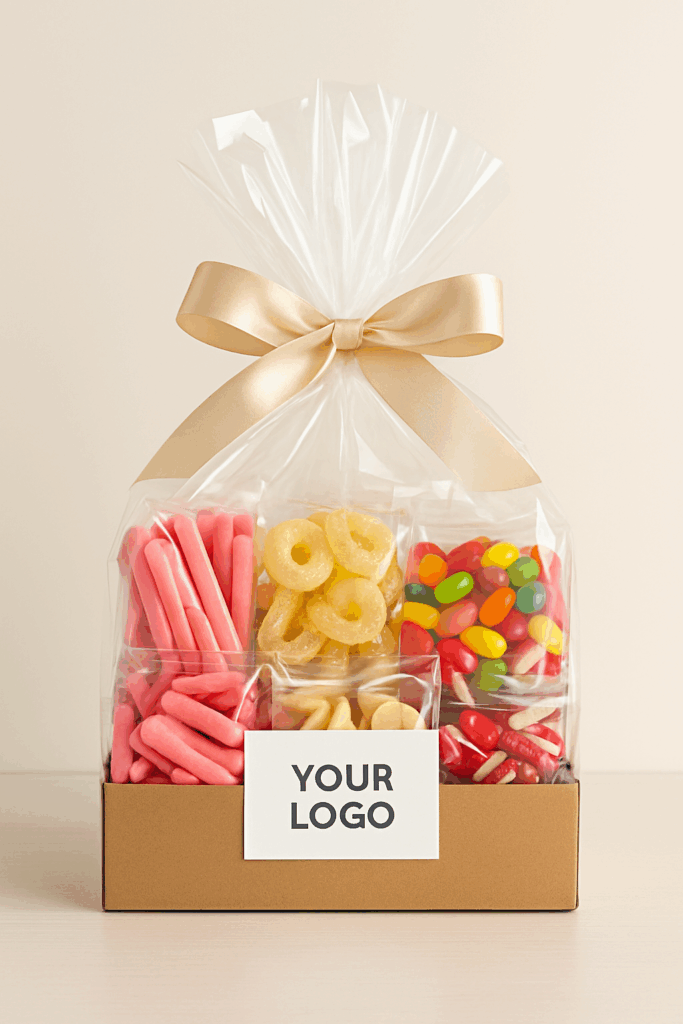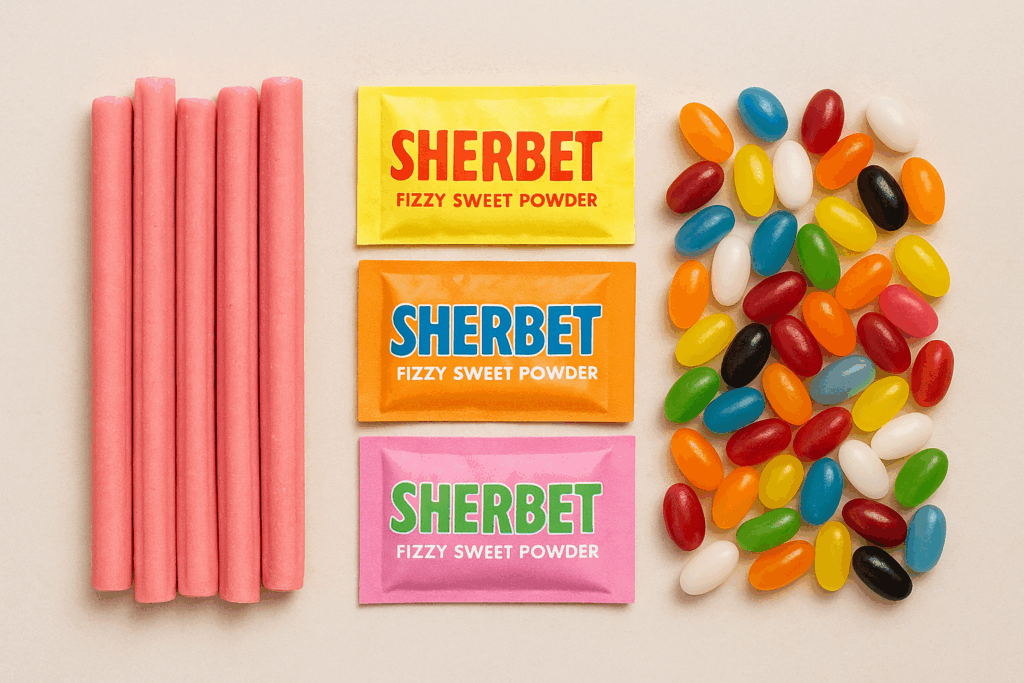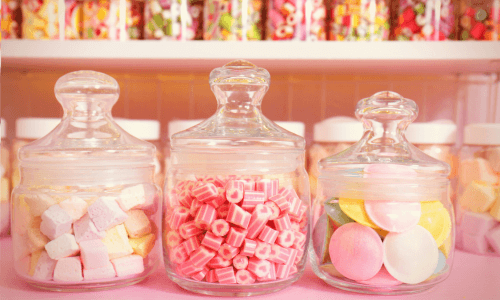Everyone remembers their favourite lolly from childhood. Whether it was musk sticks, sherbets, or jelly beans, sweets have always held a special place in Australian culture. But when we look at the history promotional lollies tell, it’s clear they are more than just nostalgic. Over the years, they’ve also become a clever promotional tool for businesses.
Let’s explore how they evolved from corner-shop penny sweets to branded hampers at corporate events.
Penny Sweets and the Birth of Lolly Culture
In the early 1900s, children would walk into their local milk bars with coins ready for a mix of penny sweets. These treats were part of everyday life, and shops flourished thanks to regular visits from loyal customers. This early connection between sweets and repeat business laid the groundwork for lollies as a marketing tool.

Lollies as Giveaways
By the mid-20th century, businesses began handing out lollies as simple giveaways. Think of the free mints on a restaurant counter or boiled lollies from local stores. These weren’t just nice gestures, they were deliberate branding moves that made customers happy and encouraged them to return.
Today, the same tradition lives on with branded lollies at expos, conferences, and receptions. A sweet treat still works better than a flyer at sparking positive connections.
From Local Shops to Corporate Events
By the 1980s and 1990s, promotional lollies had fully entered the corporate world. Businesses handed them out at trade shows, stocked them in staff kitchens, and tucked them into client gift packs.
This era also brought innovations like custom chocolates, where logos could be printed directly on the chocolate itself. Branding was no longer limited to the wrapper; it became part of the product.
Hampers and High-End Confectionery
As corporate gifting grew more popular, lollies made their way into premium hampers. What once was a simple paper bag of mixed sweets became beautifully packaged jars and boxes, designed to impress.
And with today’s focus on sustainability, many businesses choose eco-friendly packaging to align with modern values. This shows that lollies continue to adapt, staying relevant in changing times.

Why Nostalgic Marketing Works—and Why It Matters
Nostalgia has always been one of the strongest tools in a marketer’s kit. Handing someone a musk stick or sherbet bomb doesn’t just give them sugar; it brings back childhood memories. Those emotions make the brand behind the lolly more relatable and memorable.
Research supports this too. As the BBC reports, brands are increasingly leaning on nostalgia to connect with audiences because it taps into feelings of comfort and familiarity. When you combine that effect with the universal appeal of confectionery, the result is a marketing approach that’s hard to forget.
This is exactly why businesses still use lollies for promotional campaigns. They don’t just hand out sugar, they hand out memories.

A Sugary Trip Down Memory Lane
From penny sweets at the corner shop to premium branded hampers, lollies have played a surprisingly consistent role in marketing. They’ve evolved in form and style, but the effect is the same: they build goodwill, spark conversations, and create connections that last longer than the treat itself.
So next time you’re planning a campaign or client gift, remember, you’re not just giving lollies. You’re handing out a piece of nostalgia, and that’s something people carry with them long after the last sweet is gone.



